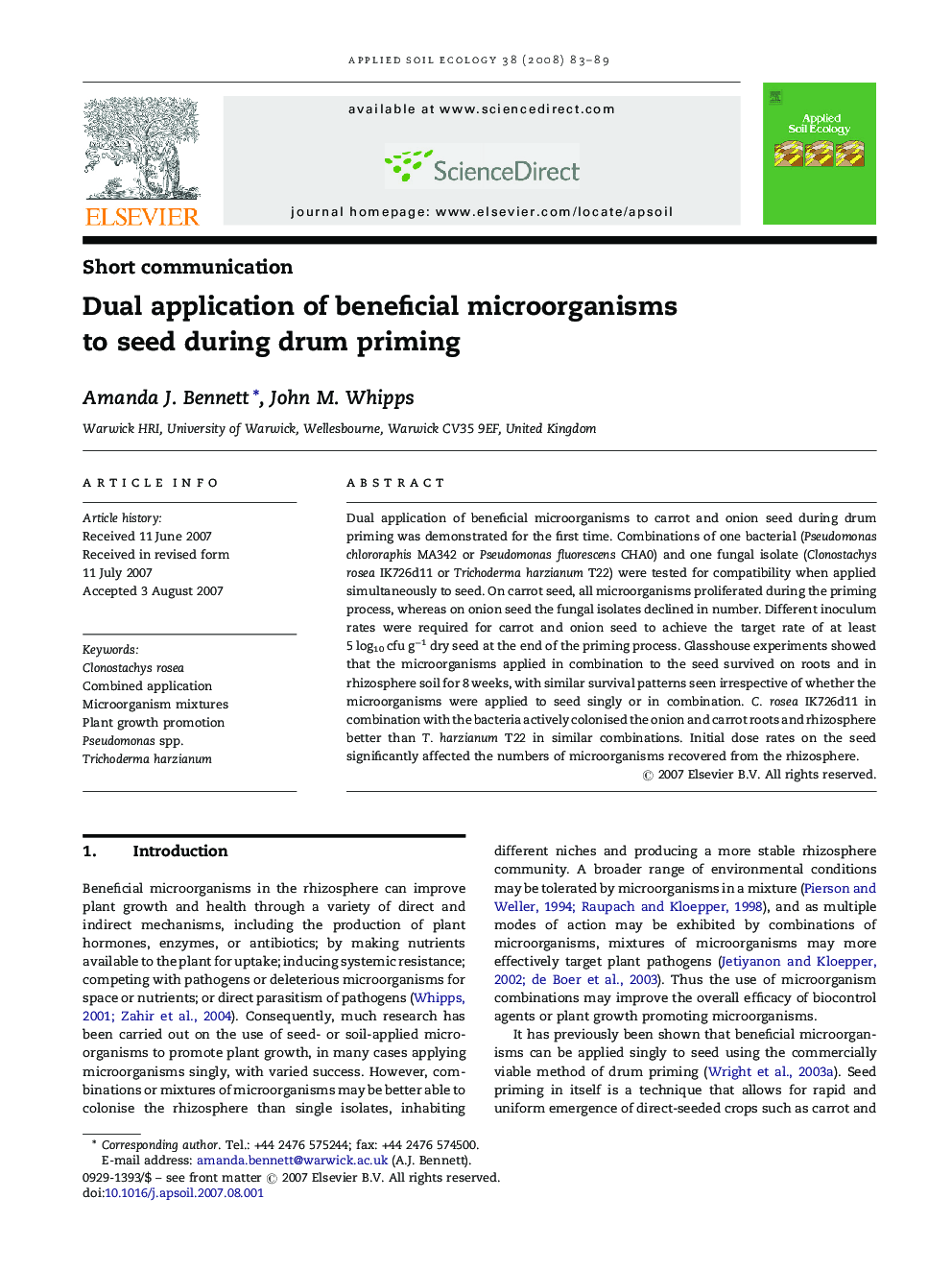| Article ID | Journal | Published Year | Pages | File Type |
|---|---|---|---|---|
| 4383285 | Applied Soil Ecology | 2008 | 7 Pages |
Abstract
Dual application of beneficial microorganisms to carrot and onion seed during drum priming was demonstrated for the first time. Combinations of one bacterial (Pseudomonas chlororaphis MA342 or Pseudomonas fluorescens CHA0) and one fungal isolate (Clonostachys rosea IK726d11 or Trichoderma harzianum T22) were tested for compatibility when applied simultaneously to seed. On carrot seed, all microorganisms proliferated during the priming process, whereas on onion seed the fungal isolates declined in number. Different inoculum rates were required for carrot and onion seed to achieve the target rate of at least 5 log10 cfu gâ1 dry seed at the end of the priming process. Glasshouse experiments showed that the microorganisms applied in combination to the seed survived on roots and in rhizosphere soil for 8 weeks, with similar survival patterns seen irrespective of whether the microorganisms were applied to seed singly or in combination. C. rosea IK726d11 in combination with the bacteria actively colonised the onion and carrot roots and rhizosphere better than T. harzianum T22 in similar combinations. Initial dose rates on the seed significantly affected the numbers of microorganisms recovered from the rhizosphere.
Keywords
Related Topics
Life Sciences
Agricultural and Biological Sciences
Ecology, Evolution, Behavior and Systematics
Authors
Amanda J. Bennett, John M. Whipps,
